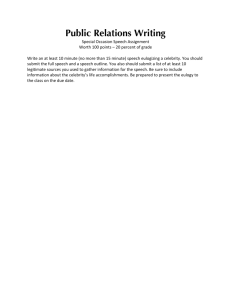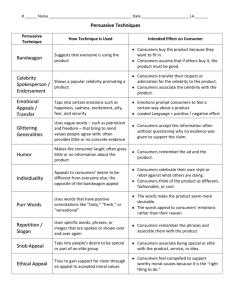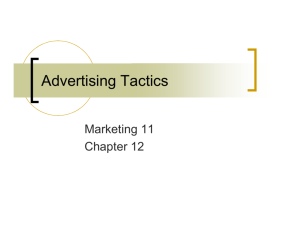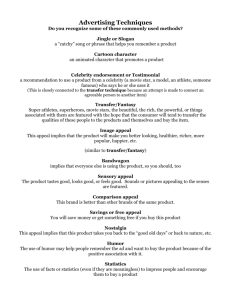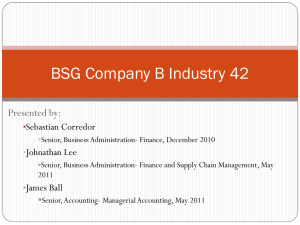R.O.C. Running over the competition
advertisement
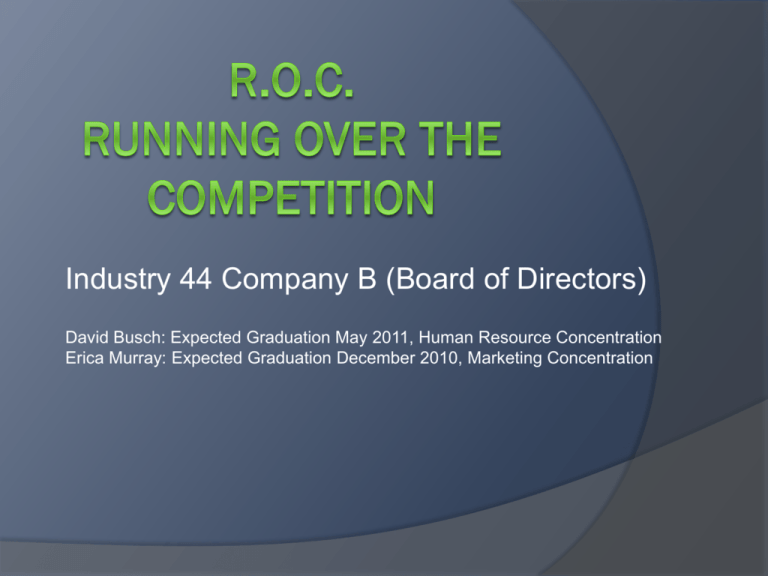
Industry 44 Company B (Board of Directors) David Busch: Expected Graduation May 2011, Human Resource Concentration Erica Murray: Expected Graduation December 2010, Marketing Concentration 5-Forces Analysis Competitive Forces Power of Threat Reason Suppliers High In Year 17, wholesale demand and private label demand exceeded suppliers capacity in every geographic location. Buyers High Buyers can choose among more than two sellers Substitutes Low Customers are not willing to use products from another industry; no real substitutes Rivalry High In year 17, there are several competitors roughly the same size (For example, Company A, Company B, and Company D all control around 12% of the wholesale market share in North America) Threat to Entry Low No evidence from the BSG to suggest new companies entering the market; No immediate threat from other companies illustrated through the strategic group map 2 LOW Forces: Expected profitability on business average on all KSF will be about equal to cost of capital Company Position Year 17 North America Company B offers a wide range of models, with a competitive price and an average S/Q rating of 6. Key Success Factors Business Strategy Game S/Q Rating Inventory Turnover Celebrity Appeal Real Footwear Industry Fashion Design and Technology Manufacturing Efficiency: Nike Strategy Celebrity Appeal Strength Assessment Critique North America Wholesale Segment Year 17 Key Success Factor Company Score Industry Average Strength Assessmen t Score S/Q Rating 7 6 5 Inventory Turnover 12.59 26.24 3 Celebrity Appeal 265 111 5 Industry 43B is well below the industry average for inventory turnover. As board of directors, we believe top management should be more efficient in controlling inventory and ensuring customers can purchase the latest styles of shoes. However, we do support industry 43B’s commitment to increase the number of retailer outlets utilized in order to increase brand recognition and loyalty. Market Share Trend Critique 20 18 16 Market Share % 14 12 North America Europe Africa 10 Asia Pacific 8 Latin America 6 4 2 0 Year 11 Year 12 Year 13 Year 14 Year 15 Year 16 Year 17 Market share is continuing to decrease in all four geographic locations. We agree with shareholders, and believe top management should focus on recapturing market share by increasing celebrity appeal. Financial Performance Critique 30 25 20 EPS 15 ROE Net Profit 10 5 0 Year 11 Year 12 Year 13 Year 14 Year 15 Year 16 Year 17 Net profit as a % on net revenue EPS, ROE, and net profit declined to a minimum in Year 15. Top management increased those numbers in Year 16. However, levels decreased again in year 17. As with shareholders, we believe top management needs to produce more consistent results for EPS, ROE, and net profit. Recommendations for Top Management To create and sustain competitive advantage in relationship with… Customers: Top management should work to reduce production costs and manage inventory turnover more efficiently, while continuing to offer a wide range of models with a high S/Q rating. Shareholders: Top management should focus on recapturing their lost market share by increasing celebrity appeal and improving their financial performance to imitate peak years by continuing to maintain high stock prices and offering increased dividends. Citation Cite: Jannarone, John. “Nike Strategy Leaves It Room to Run.” Wall Street Journal (eastern Edition) 16 Mar. 2010: C.10. Web. 2010 Sep 20.<http://proquest%20.umi%20.com/pqdlink%20?did=1983 416321%20&Fmt=7%20&clientId=15092%20&RQT=309%2 0&VName=PQD>.
